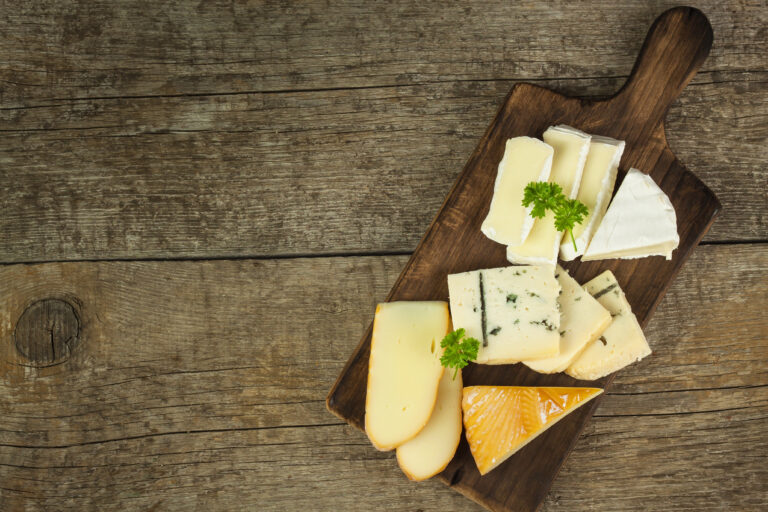
Celebrate Cheese During National Dairy Month
Maureen Rowan Murphy
People around the world have a love affair with cheese, and it’s easy to see why! Cheese is a flavorful and
healthful addition to many dishes. Most cheeses are a good or excellent source of calcium, a nutrient that many
people are lacking in their diet, and cheese also provides other essential nutrients like phosphorus and high-quality
protein. These three nutrients are particularly important to help build and maintain healthy bones.
With so many varieties to choose from, there is something to please everyone’s palate, and cheese can fit into most healthy eating plans. Those watching sodium in their diet, can choose softer, less-aged cheeses as they generally require less salt than harder, aged varieties. There are also cheeses available that are lower in sodium and fat available. Even people with lactose intolerance can enjoy cheese by choosing natural, harder cheeses like Cheddar, Colby, Swiss and Monterey Jack.
Cheese is a complex food made with just a few simple ingredients.
Did you know?
It takes 10 pounds of milk to make just 1 pound of cheese
There are more than 300 different cheeses in the U.S. and 2000 varieties in the world
Cheddar cheese is the most popular cheese in America while Mozzarella is the most popular globally
Cheese is the 2nd largest source of dietary calcium for Americans
The most popular cheese recipe in the United States is “macaroni and cheese”
Some varieties of cheese like mozzarella, cheddar, Swiss and American, may help prevent tooth as it promotes saliva flow which leads to the elimination of sugar and acids form the mouth
1 ½ oz. natural cheese or 2 oz. processed cheese is considered a serving about 4 dice-size cubes
Tips for Serving and Storing Cheese
Take cheese out of the refrigerator approximately 30 minutes before serving for best flavor and aroma
Create a delicious cheese platter by choosing up to 5 cheeses that differ in texture, flavor, size and shape
Arrange the cheeses from mild to strong and soft to hard and provide separate knives for each cheese to keep the flavors distinct
Choose a simple cracker without excess salt or flavors to enhance the flavor of the cheese(s)
Choose crusty breads for mild cheeses or a heavy fruit or nut bread with an aged or more complex selection when serving bread
Serve cheese with your favorite fresh fruit
Grapes can be served with almost any cheese
Pears go great with blue cheese, gorgonzola or aged Gouda
Fresh berries go nicely with a soft ripened cheese such as brie or camembert
Fresh or dried figs pair deliciously with Spanish Manchego or Reggiano Parmesan
Store cut cheese, tightly wrapped, in the refrigerator, away from other aromatic foods as it absorbs other flavors, and also loses both flavor and moisture when exposed to air
Cooking with Cheese
It is easier to shred or grate natural cheese when cold
Four ounces of ungrated cheese yields one cup when grated
When preparing sauces and soups, cook over low to medium heat and add toward the end of preparation as cooking over high heat, or for long periods of time, will cause the cheese to separate
For casseroles and baked dishes, sprinkle the grated/shredded cheese over the dish the last ten minutes of baking
Cheese can be enjoyed as an appetizer/snack or at any meal, and here’s a few recipe ideas.
